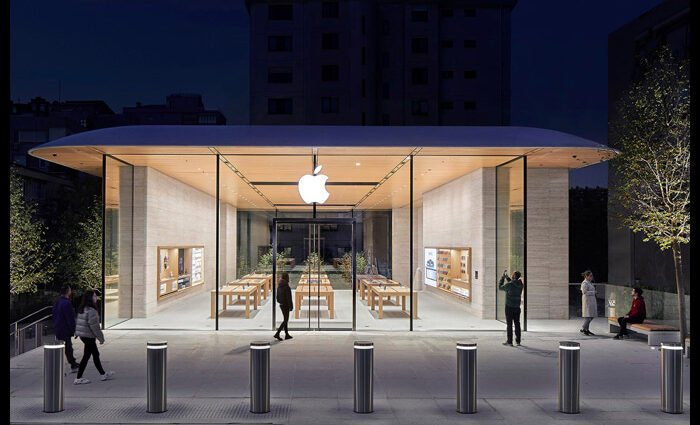Apple Inc. is on the brink of making history as the first company ever to close with a market value of $3 trillion, further solidifying the unrelenting dominance of big tech on Wall Street. On Friday, the iPhone maker saw a 1.2% increase, pushing its market capitalization to $3.01 trillion and its year-to-date gain to a staggering 47%. Throughout the year, Apple’s rally has added over $940 billion to the company’s overall size.
This milestone underscores the continued supremacy of tech mega-cap companies in the broader stock market. The tech sector has overshadowed traditional growth stocks, leading some to question the sustainability of the unexpected rally, particularly in the face of potential interest rate hikes by the Federal Reserve. The strength of big tech in 2023 has propelled the Nasdaq 100 Index up by 39%. The surge is largely fuelled by excitement surrounding artificial intelligence, as well as investors gravitating towards qualities exemplified by Apple, such as a strong balance sheet, resilient revenue streams, and a robust competitive position.
Jonathan Curtis, Director of Portfolio Management for Franklin Equity Group, emphasized that Apple’s long-standing outperformance can be attributed to its successful business strategy, effective earnings plan, and growing influence over consumers. He expressed no surprise that Apple is leading the race towards the $3 trillion milestone, highlighting the company’s phenomenal balance sheet, dividend growth potential, active repurchasing program, and a platform business akin to consumer staples, all supported by the device that people spend hours looking at every day.
Reflecting Wall Street’s enduring optimism towards Apple, Citigroup initiated coverage of the stock with a buy rating, citing underappreciated potential for margin expansion. The bank sees additional upside of around 30% for Apple’s stock, which would bring its valuation close to the $4 trillion mark.
Apple first became the world’s most valuable stock in 2011, with a market cap below $340 billion, representing approximately 3.3% of the S&P 500. Since then, it has consistently maintained its position at the top. The company achieved a $1 trillion valuation in mid-2018 and reached the $2 trillion mark in August 2020, making it the first U.S. company to surpass that level. However, Saudi Aramco was the first overall company to achieve a $2 trillion valuation.
Although Apple briefly surpassed the $3 trillion mark in early 2022, it failed to close above that level, marking the beginning of a downward trend that has now been completely erased.
Companies of this magnitude are rare, and in the U.S., they are predominantly represented by other mega-cap technology and internet stocks such as Alphabet Inc., Amazon.com Inc., and chipmaker Nvidia Corp., the first trillion-dollar chipmaker. Microsoft Corp is the only other U.S. stock with a valuation exceeding $2 trillion.
While Apple may not be the top gainer of the year—companies like Nvidia, Meta Platforms Inc., and Tesla Inc. have more than doubled in value—its size grants it significant influence over the markets, accounting for 7.6% of the weight of the S&P 500 Index.
However, reaching this milestone does not guarantee smooth sailing for Apple. The stock currently trades at nearly 30 times forward earnings, albeit lower than its peak of over 35 in 2020. It remains significantly above its 10-year average multiple of 17.9. Despite Citi’s bullish outlook, analysts have been growing cautious amid the year’s rally. Less than 70% of the firms tracked by Bloomberg recommend buying Apple’s stock, the lowest ratio among trillion-dollar companies. Furthermore, its consensus rating, a measure of the buy, hold, and sell recommendations, is near its lowest point since November 2020. A recent downgrade from UBS serves as a testament to weakening sentiment.
Furthermore, Apple’s stock price is currently above the average price target, suggesting analysts do not anticipate substantial additional gains from its current levels.
Source: Read Full Article

